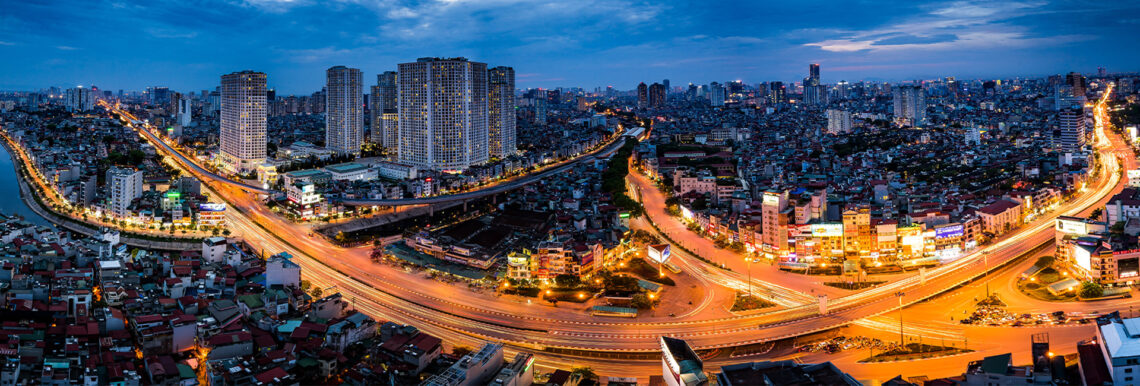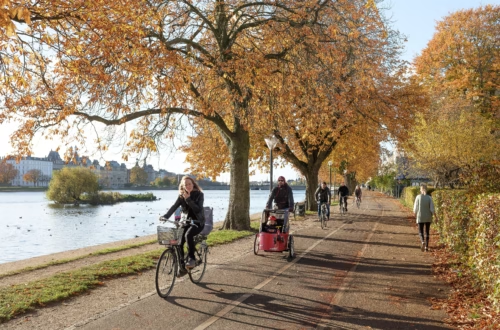Digital transformation is reshaping urban living in ways that were once the stuff of sci-fi dreams. From smart traffic systems to AI-powered city planning, technology is weaving itself into the fabric of our cities, making them more efficient, sustainable, and—dare I say—more human. This article dives deep into how digital transformation is revolutionizing urban environments, with real-world examples, pros and cons, and a sprinkle of humor to keep it relatable.
What Is Digital Transformation in Urban Living?
Digital transformation in urban living refers to the integration of advanced technologies like AI, IoT, big data, and cloud computing into city systems to enhance efficiency, sustainability, and quality of life. It’s not just about fancy gadgets; it’s about using data and tech to solve real urban challenges—like traffic jams, pollution, or overcrowded public services. Think of it as giving cities a brain upgrade to handle the chaos of modern life.
Why Digital Transformation Matters for Cities
Cities are growing faster than my inbox after a week-long vacation. By 2050, nearly 70% of the world’s population will live in urban areas, according to the United Nations. Digital transformation helps cities manage this growth by optimizing resources, improving services, and fostering inclusivity. It’s like giving a city a Swiss Army knife to tackle its biggest problems.
The Role of Smart Cities in Urban Evolution
Smart cities use digital tools to collect and analyze data, enabling real-time decision-making. For instance, Singapore’s Smart Nation initiative uses sensors to monitor traffic flow, reducing congestion by 15% in key areas. These systems make cities more responsive, like a friend who actually replies to your texts on time.
Enhancing Urban Sustainability
Digital transformation promotes sustainability by optimizing resource use. Copenhagen’s smart energy systems, for example, cut carbon emissions by 20% through real-time energy monitoring. It’s like teaching a city to recycle its energy, not just its plastic bottles.
Key Technologies Driving Urban Transformation
Several technologies are at the heart of this urban revolution. Each plays a unique role in making cities smarter, greener, and more livable.
Internet of Things (IoT)
IoT connects devices to create a network of real-time data. In Toronto, IoT sensors monitor water usage, reducing waste by 10% annually. It’s like having a city-wide Fitbit that tracks every drop of water.
Artificial Intelligence (AI)
AI analyzes massive datasets to predict urban trends. In Los Angeles, AI-powered traffic systems reduced commute times by 12% by optimizing signal timings. It’s as if the city hired a genius traffic cop who never sleeps.
Big Data Analytics
Big data helps cities understand patterns and make informed decisions. New York City uses data analytics to predict crime hotspots, lowering crime rates by 7% in targeted areas. It’s like giving the police a crystal ball, minus the mysticism.
Cloud Computing
Cloud computing enables scalable, cost-effective data storage and processing. In Dubai, cloud-based platforms streamline public services, cutting administrative costs by 30%. It’s like moving city hall to a virtual office that’s open 24/7.
How Digital Transformation Improves Urban Living
Digital transformation touches every aspect of urban life, from how we move to how we connect. Here’s a breakdown of its impact.
Smarter Transportation Systems
Traffic is the bane of urban existence—like waiting for a pizza delivery that never arrives. Digital tools like real-time traffic apps and autonomous buses are changing that. In Helsinki, smart transit apps integrate buses, trains, and bikes, cutting travel times by 20%. You can now get to work faster than it takes to decide what to watch on Netflix.
Enhanced Public Services
Digital platforms make public services more accessible. In India, the Aadhaar system uses digital IDs to streamline access to healthcare and subsidies, serving over 1.3 billion people. It’s like giving every citizen a VIP pass to government services.
Improved Urban Planning
Urban planners are using AI and GIS (Geographic Information Systems) to design better cities. In Shenzhen, China, AI-driven planning reduced urban sprawl by 15%, preserving green spaces. It’s like giving planners a magic wand to balance growth and nature.
Boosting Sustainability
Digital tools help cities go green. Amsterdam’s smart grid system optimizes energy use, reducing household energy bills by 10%. It’s like teaching your city to turn off the lights when no one’s home.
Real-World Examples of Digital Transformation in Cities
Let’s look at some cities that are nailing digital transformation—and one that’s still figuring it out.
Singapore: The Gold Standard
Singapore’s Smart Nation initiative is a masterclass in digital urban living. From smart traffic lights to digital healthcare portals, the city-state has reduced commuting times by 15% and improved healthcare access by 25%. It’s like living in a city that’s always one step ahead of you.
Copenhagen: Green and Smart
Copenhagen uses IoT and AI to monitor energy and waste systems, cutting carbon emissions by 20% since 2010. The city’s bike-sharing app, integrated with real-time data, makes cycling as easy as scrolling through social media.
New York City: Data-Driven Safety
NYC’s use of big data to predict crime hotspots has lowered crime rates in targeted areas. The city also uses digital twins—virtual city models—to simulate urban planning scenarios, saving millions in development costs. It’s like playing SimCity, but with real stakes.
Challenges in Implementation: The Case of Sidewalk Labs
Not every project is a success story. Toronto’s Sidewalk Labs, a Google-backed smart city project, was scrapped in 2020 due to privacy concerns and public backlash. It’s a reminder that even the best tech needs community trust to succeed.
Pros and Cons of Digital Transformation in Urban Living
Like any big change, digital transformation has its highs and lows. Here’s a quick look:
Pros
- Efficiency: Streamlines services like transportation and utilities, saving time and money.
- Sustainability: Reduces waste and emissions through smart systems.
- Inclusivity: Digital platforms make services accessible to more people.
- Innovation: Drives economic growth through new technologies and industries.
Cons
- Privacy Concerns: Data collection raises risks of surveillance and breaches.
- Digital Divide: Not everyone has access to tech, leaving some behind.
- High Costs: Initial investments can strain city budgets.
- Resistance to Change: Communities may distrust new technologies.
Comparison: Digital vs. Traditional Urban Systems
| Aspect | Digital Systems | Traditional Systems |
|---|---|---|
| Traffic Management | AI optimizes signals, reducing congestion by 12% | Manual signals, prone to delays |
| Public Services | Digital platforms, 24/7 access | In-person, limited hours |
| Urban Planning | AI and GIS for precision | Manual planning, less accurate |
| Cost Efficiency | High upfront costs, long-term savings | Lower initial costs, higher long-term costs |
Digital systems outperform traditional ones in efficiency and scalability, but they require significant investment and public trust to succeed.
People Also Ask (PAA)
What is a smart city?
A smart city uses digital technologies like IoT and AI to improve urban systems, from transportation to waste management, enhancing residents’ quality of life.
How does digital transformation affect urban sustainability?
Digital transformation promotes sustainability by optimizing resource use, reducing emissions, and enabling data-driven environmental policies.
What are the challenges of smart cities?
Challenges include privacy concerns, high costs, digital divides, and public resistance to new technologies.
Where can I learn more about smart city technologies?
Check out resources like the Smart Cities Council or academic journals like Urban Informatics for in-depth insights.
Challenges and Ethical Considerations
Digital transformation isn’t all rosy. It comes with hurdles that cities must navigate carefully.
Privacy and Data Security
With great data comes great responsibility. Smart cities collect massive amounts of data, raising concerns about surveillance. The Sidewalk Labs fiasco in Toronto showed how quickly public trust can erode without transparent data policies.
The Digital Divide
Not everyone has a smartphone or high-speed internet. In developing cities, up to 30% of residents may lack access to digital tools, creating a divide between the tech-savvy and the left-behind. It’s like hosting a party where half the guests can’t find the door.
High Implementation Costs
Building a smart city isn’t cheap. Initial costs for IoT sensors or AI systems can run into billions, putting pressure on city budgets. It’s like buying a fancy new phone—great features, but ouch, that price tag.
Tools and Resources for Digital Transformation
For cities or individuals looking to dive into digital transformation, here are some top tools:
- Esri ArcGIS: A leading GIS platform for urban planning, used by cities like Shenzhen. Learn more.
- IBM Maximo: IoT-based asset management for smart infrastructure. Explore here.
- Cisco Smart City Solutions: Networking tools for connected cities. Check it out.
- Tableau: Data analytics for urban insights. Visit Tableau.
These tools empower cities to harness data for smarter decisions, like choosing the perfect coffee shop based on real-time crowd data.
A Personal Story: Living in a Smart City
Last year, I visited Singapore and was blown away by its Smart Nation app. I could check bus times, pay for parking, and even book a doctor’s appointment—all from my phone. It felt like the city was my personal assistant, anticipating my needs. But I also noticed older residents struggling with the app, reminding me that tech must be inclusive to truly transform lives.
The Future of Urban Living
Digital transformation is just getting started. By 2030, experts predict 50% of global cities will adopt smart technologies, creating urban environments that are more connected and resilient. Imagine a city where your trash bin texts you when it’s full, or your commute is planned by an AI that knows your schedule better than you do. The future is exciting, but it demands careful planning to avoid pitfalls like privacy breaches or inequality.
FAQ
How does digital transformation improve urban living?
It enhances efficiency in transportation, public services, and planning while promoting sustainability through smart resource management.
What are the risks of smart cities?
Risks include privacy concerns, digital divides, high costs, and potential job displacement due to automation.
Where can cities get funding for digital transformation?
Governments, private partnerships, and grants from organizations like the World Bank can fund smart city projects.
What are the best tools for smart city planning?
Tools like Esri ArcGIS, IBM Maximo, and Cisco Smart City Solutions are top choices for urban digital transformation.
How can residents benefit from smart cities?
Residents enjoy faster commutes, better services, and lower environmental impact, but they must navigate privacy and access challenges.
Conclusion
Digital transformation is turning cities into living, breathing ecosystems that adapt to our needs. From Singapore’s seamless transit to Copenhagen’s green energy grids, the benefits are clear: smarter, greener, and more inclusive urban living. But challenges like privacy, costs, and digital divides remind us to tread carefully. As we build the cities of tomorrow, let’s ensure technology serves everyone—not just those who can afford the latest smartphone. Want to explore more? Check out the Smart Cities Council or dive into urban informatics journals for the latest trends.





